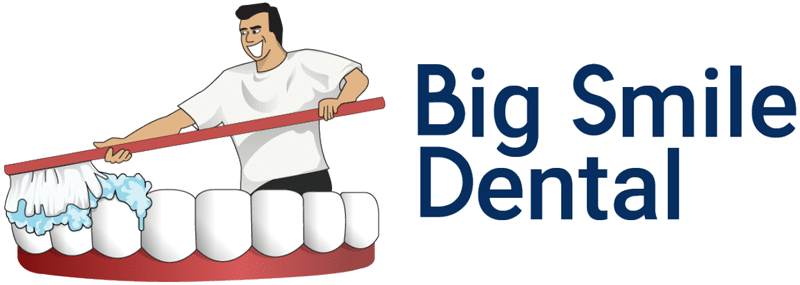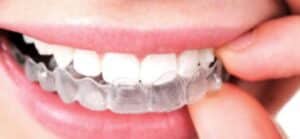
Both conventional metal braces and transparent, removable Invisalign aligners are widely used by dentists to gently and progressively realign teeth. These orthodontic treatments offer distinct benefits and can treat many of the same problems. Therefore, deciding which orthodontic treatment is best can be challenging.
Many variables must be considered when picking between Invisalign and more conventional fixed braces like ceramic braces or lingual braces. Price, length of treatment, aesthetics, and personal preference all play a role in your final decision.
This is crucial because changing orthodontic treatment is not a simple process once treatment has begun. This article will explain the differences between Invisalign aligners over traditional braces so you can make an informed decision toward straighter teeth and a perfect smile.
How Do Orthodontic Treatments Work?
Braces are orthodontic devices used to treat irregularities of the teeth, including crowding, crookedness, misalignment, and improper bite. Five types of braces are available to orthodontic patients at Big Smile Dental, including metal braces, ceramic braces, self-ligating braces, lingual braces, and transparent Invisalign aligners.
Invisalign is a relatively new, creative method for straightening crooked teeth that grow or are positioned improperly. Instead of metal wires or ceramic brackets that are bonded or fastened to the teeth, Invisalign braces use a series of removable transparent aligners made from a thin thermoplastic polymer called SmartTrack. These aligners made of special plastic (also known as trays) fit snugly over your teeth, making them a more discrete option than traditional metal braces. These removable aligners are FDA-approved and free of BPA, BPS, latex, and gluten.
Braces work by exerting consistent and prolonged pressure on teeth and jaws to change their position and alter the teeth to achieve a straight smile. People have difficulty conceptualizing how dental movement is possible because of the widespread belief that our teeth are fixed to our jawbone. However, beneath your gums is a bone-covered membrane that binds your teeth to your jaw. This membrane regulates how your teeth are positioned and reacts to the pressure from your orthodontic treatment.
Invisalign vs. Braces – Cost of Treatment
The cost of Invisalign aligners and traditional braces varies from person to person based on the level of correction required and any delays or complications encountered along the way. Invisalign can range in price from $3,500 to $8,000, with an average cost of about $5,000. Since Invisalign is typically less expensive than traditional braces, which can cost between $4,000 and $10,000, it is a viable option to traditional braces for many people.
Fortunately, most of our patients don’t have to pay the full cost of their orthodontic therapy. Instead, you can utilize your dental insurance plans to cover a portion of the cost of braces or invisible aligners, either in a fixed dollar amount or as a percentage of the total cost. We will be happy to contact your dental insurance company on your behalf, freeing you to focus on your orthodontic treatment. You may also be able to pay with tax-free dollars from your FSA or HSA or arrange a monthly payment plan with us. Please schedule a consultation with us at your earliest convenience for a precise estimate of your orthodontic treatment.
Invisalign vs. Braces – Appearance
Braces are typically made up of small brackets attached to a wire and fitted with bands. The brackets may be made from metal, ceramic, plaster, or other materials. They can also be the color of your teeth or any other color you want.
Because of its natural aesthetic appearance, many people, particularly adults, prefer Invisalign for its discreet appearance. Plastic aligners, such as Invisalign, are custom-made to fit your mouth and look like clear retainers.
Invisalign vs. Braces – Comfort
Both orthodontic therapy can cause discomfort during the first few weeks of treatment and your regular visits for adjustments. During the first few days of Invisalign aligner therapy, it’s common to experience excessive salivation and speak with a lisp. Braces can also cause discomfort when the metal pushes up against the inside of the mouth. In contrast, Invisalign feels much smoother and softer.
Invisalign vs. Braces – Oral Hygiene Routine
Maintaining diligent dental hygiene, such as brushing your teeth after every meal and flossing, is important if you wear braces or Invisalign aligners. Regular brushing and flossing make it easier to maintain oral hygiene and prevent cavities and dental plaque. Likewise, if you wear Invisalign, keep your aligner trays clean with Invisalign’s cleaning solution after each meal to avoid bacteria and calcium buildup.
The simple home care required for Invisalign aligners reduces the chances of gum infection or tooth decay, resulting in better oral health and overall health, including fewer cavities, tooth decay, and gum problems than people who wear braces.
Invisalign vs. Braces – Effectiveness
Braces have been used to achieve straight teeth and help people achieve a beautiful smile for years. They also offer a maximal grip that can re-align even severely misaligned teeth. However, the patient cannot remove braces, so they must wear them 24 hours a day, seven days a week, as the orthodontist recommends.
The drawback of Invisalign is that the trays are removable, so patients may not always adhere to the recommended time of use. Moreover, if the trays are forgotten or misplaced, your teeth will shift while you are not wearing them.
People who use Invisalign typically wear the trays for less than the recommended amount of time, increasing the overall time it takes to complete treatment. Traditional braces are also more effective in cases of severely misaligned teeth. Teeth that are rotated or overlapping cannot always be straightened with Invisalign.
Invisalign vs. Braces – Treatment Time
The average treatment time for clear aligners is 12 months, compared to 18 to 24 months of treatment for traditional metal braces. However, the time required to achieve the desired effects is primarily determined by the complexity of the treatment plan and the position of your teeth at the beginning of treatment. We will be able to provide an estimated treatment time during your consultation.
Pros and Cons of Traditional Braces
Similar to everything else in life, orthodontic treatment offers both advantages and disadvantages. There are many aspects of braces treatment that you will like, but others that, while necessary, you may not miss when your treatment concludes. It’s essential to comprehend both sides of what to anticipate.
Benefits of braces include:
Drawbacks of braces include:
Pros and Cons of Invisalign
Aside from aesthetics and flexibility, Invisalign has many benefits for the wearer, such as:
As such, if you are looking to straighten your teeth as quickly as possible and don’t want to deal with metal brackets and wires, Invisalign aligners may be the right choice. However, it’s also beneficial to be aware of the potential drawbacks before making comparisons and conclusions.
For more information about Invisalign and braces, please contact us at Big Smile Dental. We would be pleased to schedule a consultation.






